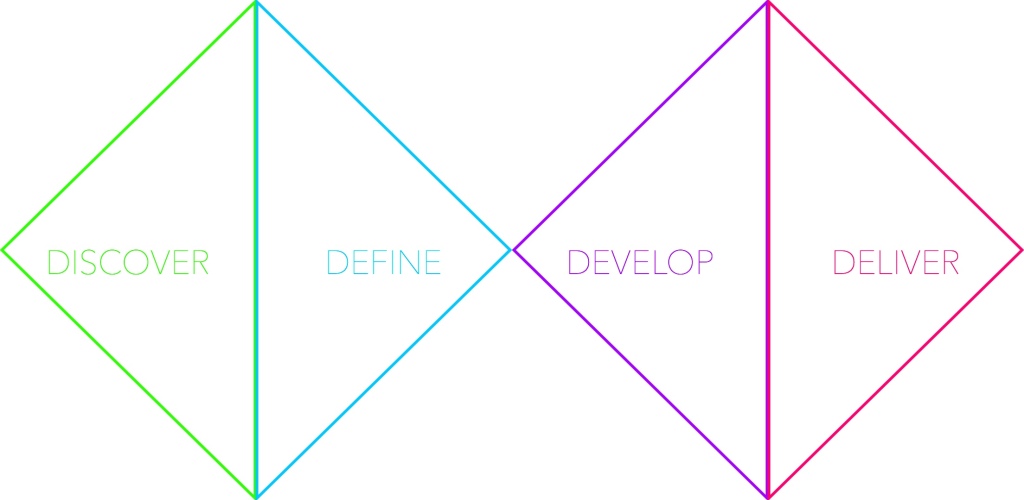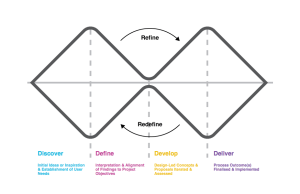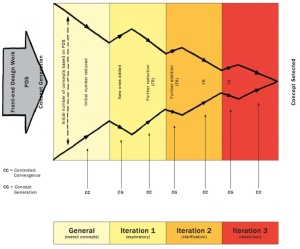Category Archives: Readings
Thoughts on Third Places
Filed under Readings, Third Places
How to get rid of our “Third Places” and thoughts on: Our Vanishing “Third Places”
“An electronically-operated garage door out front and a privacy fence out back afford near-total protection from those who, in former days, would have been neighbors.”
I think that separating ourselves from the outside world is in vogue. From immersing ourselves to our systematic daily routine (and not looking out) to grabbing with our eyes any digital device screen (and reducing to a minimum our peripheral vision) we create “bubbles” and occupy them at all times. If that process is increasing by the minute, it means that the demand for “Third Places” is decreasing and of course the customer is always right.
“The flaw in much of today’s residential land use pattern — all space is used up and there’s no provision for a community life.”
I think part of the flaw is a response to how our “home-to-work-and-back-again shuttle” works: mainly as a car commute. Therefore, that need was answered by a city-grid planned around vehicles with a very high percentage of the public property dedicated to vehicular circulation and the rest to pedestrian circulation only.
If you want to get rid of our few “Third Places” simply do nothing or move as far away from work as possible.
On the other hand, if you want them back follow what advanced societies do:
“THE CITIES OF THE FUTURE ARE PEOPLE-FRIENDLY CITIES” (http://denmark.dk/en/green-living/bicycle-culture/the-cities-of-the-future-are-people-friendly-cities/)
I think the best way to try to rescue or create public “Third Places” might be to transform our sidewalks from being circulation-paths to a series of bay-spaces or plazas by lowering the percentage-area that is currently assigned to cars.
“Third places are nothing more than informal public gathering places.”
The moment “Third Places” appear people will start using them.
About six years ago New York City created a “Third Place” in Times Square as a series of plazas that potentiated the place to become an actual square. In my opinion an excellent move. It helped near by businesses and attracted many interesting people like “The Desnudas”.
“The Desnudas of Times Square, Topless but for the Paint” (http://www.nytimes.com/2015/08/16/nyregion/the-desnudas-of-times-square-topless-but-for-the-paint.html)
Unfortunately, if you want to get rid of our few “Third Places” simply become one.
“Mayor de Blasio Raises Prospect of Removing Times Square Pedestrian Plazas” (http://www.nytimes.com/2015/08/21/nyregion/mayor-de-blasio-raises-prospect-of-removing-times-square-pedestrian-plazas.html)
Filed under Third Places, Uncategorized
Thoughts on Ray Oldenburg’s article “Our Vanishing ‘Third Places’”
Filed under Third Places, Uncategorized
Thoughts on “Third Places” – Debbie
Filed under Readings, Third Places
Third Places Reflection – Datrianna
Filed under Readings, Third Places
Thoughts on “Third Places” – Somin
Ray Oldenburg describes “Third Places” as places where we spend our time and get close to each other often sharing information. When I look at the characteristics of third places, I see it’s mixed of first place (home) and second place (work). It’s pleasurable like how we spend time at home. It’s also a place where we could share information like we usually do at work. According to Ray Oldenburg, we are having less and less places like third places. I somewhat understand why. We all know how technology and web-based service have been developed rapidly for last 2, 3 decades. Since we have internet, a lot of things can be accomplished online even creating communities.
Third places could be also different depending on what culture you have. Us, Koreans, have different cultural background comparing to American’s. When I think of third places in Korea, there’s none. Simply, we are not used to that. Another thing is that more and more Koreans don’t make time for neighbors nowadays. Only some Korean mothers who are very passionate about their children gather together to share school or after-class-activity related information. I won’t say this can be called so since it’s not pleasurable, moms are often competitive and even stressed out. Besides that, Koreans look for convenience a lot. For example, Ray Oldenburg mentioned laundromat as one type of third places. As far as I know, Koreans, who just came to America, prefer doing laundry in their own unit than doing it in public. Most of the houses in Korea have their own laundry machine and dryer so it makes Koreans naturally spend less time in public.
Though I was born and raised in Korea, I studied about 4 years in Vancouver, Canada where I experienced a bit what Oldenburg describes as third places. As a foreign student, I used to join language meetup every Monday night at a cafe downtown. There we usually talked about what we do, what we think about pretty much anything in multi languages. Now that I read this article, I remember how valuable time I spent in that cafe doing such unforgettable activities. We even met every weekend as well doing more fun activities such as cooking various traditional foods, going on a picnic, bicycling at Stanley Park, etc. I still contact many friends I met from the meetup. One of my friends I made from the meetup actually moved his school to one in Boston after having many talks about design and technology with me. I certainly remember many of us enjoyed our time talking and sharing information. I haven’t tried any language meetups here in NY yet, and I wonder if it’s similar to what I used to have in Vancouver since NY is such a busy city, people seem to have more stuff to do. I hope I could find one third place in NY for myself soon.
Filed under Readings, Third Places
Max’s Thoughts on “Third Places”
Filed under Readings, Third Places
Design Diamond – Sam W., Trent, Sarah, Mini
Discover
We went wide on thinking of ideas of what to map. Below is the list of ideas:
- Railing Architecture; social elements such as Entering and Exiting styles
- Paths to approach the museum
- Food Vendors; placement and type
- Tables at either end of the plaza
- Differences in width of steps and their affect on paths
- Direction of the sun
- Areas of shade and their effect
- Points for photography
- Direction of approach to the museum (hypothesis: subways have an effect)
- Number of people in each group
- Catalyst, or reason for being on the steps, including meeting with coworkers, meeting friends, studying art
- Age of people
- Location of pigeons
- How people pose for photos, or percentage of selfies
- Soundscape, including the water fountains, road noise, and conversations
- Direction people were facing–forward and in staggered elevations
- Smells, such as mustard, hot dogs, and almonds roasted in sugar
- Tactile effects, such as a rigid sitting style and the feeling of stone
Define
We narrowed in to define what was of interest (our criteria was a bit arbitrary, so there’s a problem with the process)
- Railing Architecture; social elements such as Entering and Exiting styles
- Paths to approach the museum
- Areas of shade and their effect
- Points for photography
- Number of people in each group
- Catalyst, or reason for being on the steps, including meeting with coworkers, meeting friends, studying art
- Location of pigeons
- Soundscape, including the water fountains, road noise, and conversations
Develop
We developed the maps through observation and documentation, followed up by conversation
Deliver
We set to work individually to create the deliverables (without much collaboration, another problem with the model)
Filed under Design Process Diagrams
Design Process – Amy, Effy, Melody, Sunnie
Our group was in agreement that the double diamond diagram did a nice job describing the typical design process in general. If we were to modify it, we might add a feedback loop to capture how the process is often not linear. Part of the development process involves using learnings to help redefine project goals and scope. The process becomes a bit more cyclic in the middle:
We then found a really nice visual representation that captured our thinking in Bill Buxton’s Sketching User Interfaces. As you can see, Buxton characterizes the design process in a diamond-like manner with breadth and depth phases. But he also accounts for more iterative cycles throughout:
Looking forward to giving this process a try.
Filed under Design Process Diagrams



